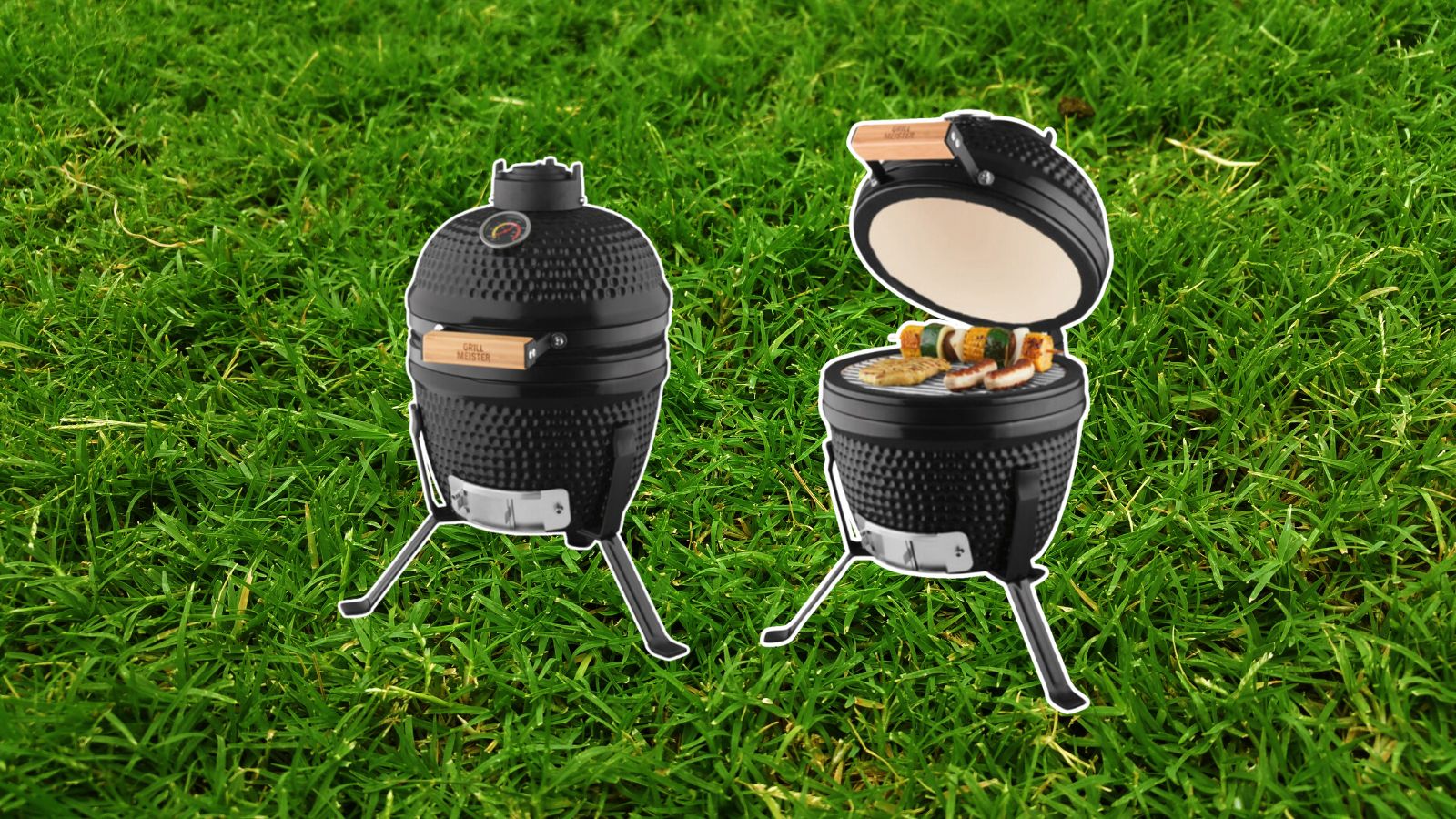
Want to know how to scarify a lawn? The process of scarification is essential to proper lawn care and the long-term health of your grass. To scarify a lawn means to remove and thatch (dead turf), moss, and debris that grows in lawns over time. Scarifying a lawn regularly improves lateral grass growth, so it is an important task to get right.
While the best lawn mower will ensure your grass is neatly trimmed, scarifying it will give you the best-looking lawn each season. Here's how to do it, according to lawn and gardening experts.
How to scarify a lawn
While the actual scarification can be done in an afternoon (unless your lawn is huge), you do need to prepare the lawn in advance by mowing it nice and short. If you already keep your lawn trim, this won't be a problem, but you can harm your grass if you cut too much in one go, so you may need to start prepping to scarify some weeks in advance.
You should have most of the tools you need for the job as part of your regular yard maintenance kit, but if you have lots of lawns, it can be worth investing in a scarifying machine to speed up the job.
Shopping list:
1. Weed pulling tool: see a selection on Amazon
2. Heavy duty gloves: see our best gardening gloves
3. Thatch rake or lawn scarifier (if you have budget and lots of lawns)
1. Cut the grass
The first step is always to cut the grass with your lawn mower. You have to do this gradually.
Robin Antill, the Director at 1st Choice Leisure Buildings says, 'bring the height down for several weeks prior to scarification. You need the grass to really be short and dry in order to perform it effectively. The grass will be cut shorter without being shocked, and greater air circulation will enable the grass to dry out before being scarified.'
2. Get rid of weeds
Next, get down to thorough weeding, removing any larger weeds first. 'Unless there are weeds on your lawn, pull them out by hand rather than using a weedkiller. After
scarifying, weedkillers will prevent germination, thus we advise employing
a plant puller (can be bought on Amazon) to get rid of the majority of weed seeds from the grass.' explains Antill.
3. Use a hand scarifier or rake to scarify
'To lift out any curls or moss from your grass when using a rake, you must use pressure throughout the entire task', recommends Antil. You will need strong leather gloves to accomplish this task to prevent damaging the skin on your hands.
If you have mobility issues and don't want the potential strain on your back from using a rake, you can buy a mechanical lawn scarifier. According to Antill, 'a motorized scarifier works much more quickly and easily. Both an electric and a gasoline scarifier will remove any thatch or mosses from your grass, but they work mechanically rather than with your human might.
'Most of the time, these machines include height adjustments, and you should make these changes after turning the machine off and setting it down on such a hard surface. It's simpler to run the device for a few meters and then make little changes just so the debris is removed without ripping up significant portions of your lawn.'
Remember that the scarification process should be done on dry grass.
4. Soak the lawn overnight
This step is important because scarification is typically done before reseeding, and lawn seed takes better to well-hydrated turf. Melody Estes, a Landscape Design Gardening Supervisor from Maine and a consultant at The Project Girl, recommends applying 'half an inch of water over the top of your lawn and letting it soak in overnight, preferably with some rain falling on it.'
For this reason, it's not recommended to scarify a lawn during extremely dry weather as your lawn will be too dry.
When is the best time to scarify a lawn?
The key is to let your lawn establish itself before you scarify it, according to Jeremy Yamaguchi, the CEO of Lawn Love. Yamaguchi advises that 'if your lawn is newly planted, you want to wait at least a year to scarify it so that it can establish. After the lawn has become established, aim to scarify it once every one to two years.'
The best time of year to scarify a lawn? Either in the spring or fall. 'If you choose to do it in the fall, make sure to do it with plenty of time to spare before the first frost.'
Should you scarify a lawn that's wet or dry?
The answer's actually neither. Yamaguchi says that 'you don’t want to scarify your lawn if it’s wet or dry. Instead, do it when it is just slightly moist, which is usually best achieved when the lawn gets watered around two days before scarifying it. If the grass is noticeably wet or entirely dry, your efforts will likely cause much more damage than good.'
This is why scarifying your lawn in the spring or fall is best -your lawn won't get parched like it likely will in the summer, but it won't get waterlogged either, which is likely during heavy winter rains.
Scarifying a lawn is an easy job, but you must do it annually to keep your lawn in good health. Something to put in your gardening calendar right now.
Meet our lawn experts

Having worked in the garden building industry for over 40 years, Robin is an expert in all things grounds maintenance.
Melody Estes from Maine works in landscaping and garden design. As well as this, she is a consultant for The Project Girl, Homes & Gardens and Gardeningetc, where she offers her expertise on gardening.
As founder of Lawn Love, a service providing lawn care to residents across the US, Jeremy knows everything there is to know about growing, and caring for, a lush lawn.
Join our newsletter
Get small space home decor ideas, celeb inspiration, DIY tips and more, straight to your inbox!
Anna is a professional writer with many years of experience. She has a passion for contemporary home decor and gardening. She covers a range of topics, from practical advice to interior and garden design.
-
 Backyard inspiration: interior designers reveal the four things you need for summer 2024, starting at just $40
Backyard inspiration: interior designers reveal the four things you need for summer 2024, starting at just $40Our edit of backyard inspiration according to interior designers will help you perfect your space for summer. Here's what the professionals are shopping this year.
By Danielle Valente
-
 There's a kamado-style Grill Meister at Lidl for less than $100, and it's a small space steal
There's a kamado-style Grill Meister at Lidl for less than $100, and it's a small space stealThere's a kamado-style Grill Meister, Lidl's recent popular buy, that clocks in at just $75. Here's why it works so well and why you need it in your backyard
By Danielle Valente
-
 Our favorite Wayfair patio furniture picks for small spaces that make a big impact
Our favorite Wayfair patio furniture picks for small spaces that make a big impactWe scoped out Wayfair patio furniture — some of which is up to 60% off this Way Day — and found perfect fits for small spaces
By Danielle Valente
-
 Anthropologie's outdoor egg chair is a boho delight, but we found swaps for $800+ less
Anthropologie's outdoor egg chair is a boho delight, but we found swaps for $800+ lessThe outdoor egg chair from Terrain, available at Anthropologie, is a cute boho, buy, but expensive. Check out these hanging egg basket swaps that are over $800 less
By Danielle Valente
-
 Target outdoor furniture that perfectly captures 2024's best backyard trends
Target outdoor furniture that perfectly captures 2024's best backyard trendsDining sets, love seats, umbrellas — Target outdoor furniture offerings are as abundant as they are stylish. See what trendy pieces to snag this year
By Danielle Valente
-
 Walmart backyard furniture picks from just $25 that will keep out nosy neighbors
Walmart backyard furniture picks from just $25 that will keep out nosy neighborsWe round up Walmart backyard furniture picks from just $25 that are stylish, seclusive, and eye-catching. If you want to make a statement, particularly one neighbors can't see, shop these deals.
By Danielle Valente
-
 Tan France tips us off on the must-have "chic" backyard accessory of the season, and it's only $10
Tan France tips us off on the must-have "chic" backyard accessory of the season, and it's only $10Tan France tips us off on the backyard buy not to do without: plastic glassware. It's a chic way to host outdoors, particularly with kids in tow.
By Danielle Valente
-
 The latest Pottery Barn sale will help you create the backyard oasis of your dreams with up to 30% off
The latest Pottery Barn sale will help you create the backyard oasis of your dreams with up to 30% offThe latest Pottery Barn sale offers up to 30% off outdoor buys including furniture and decor. Here's what to shop for the spring and summer seasons.
By Danielle Valente